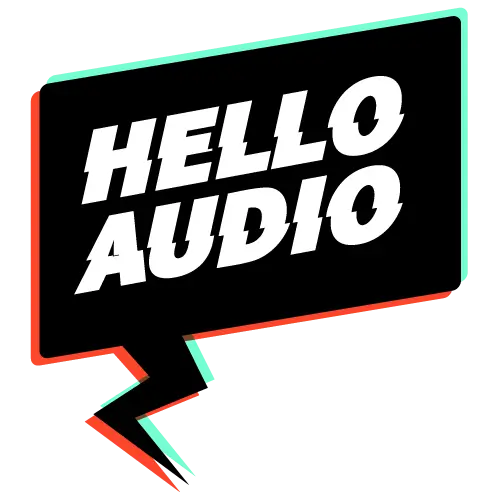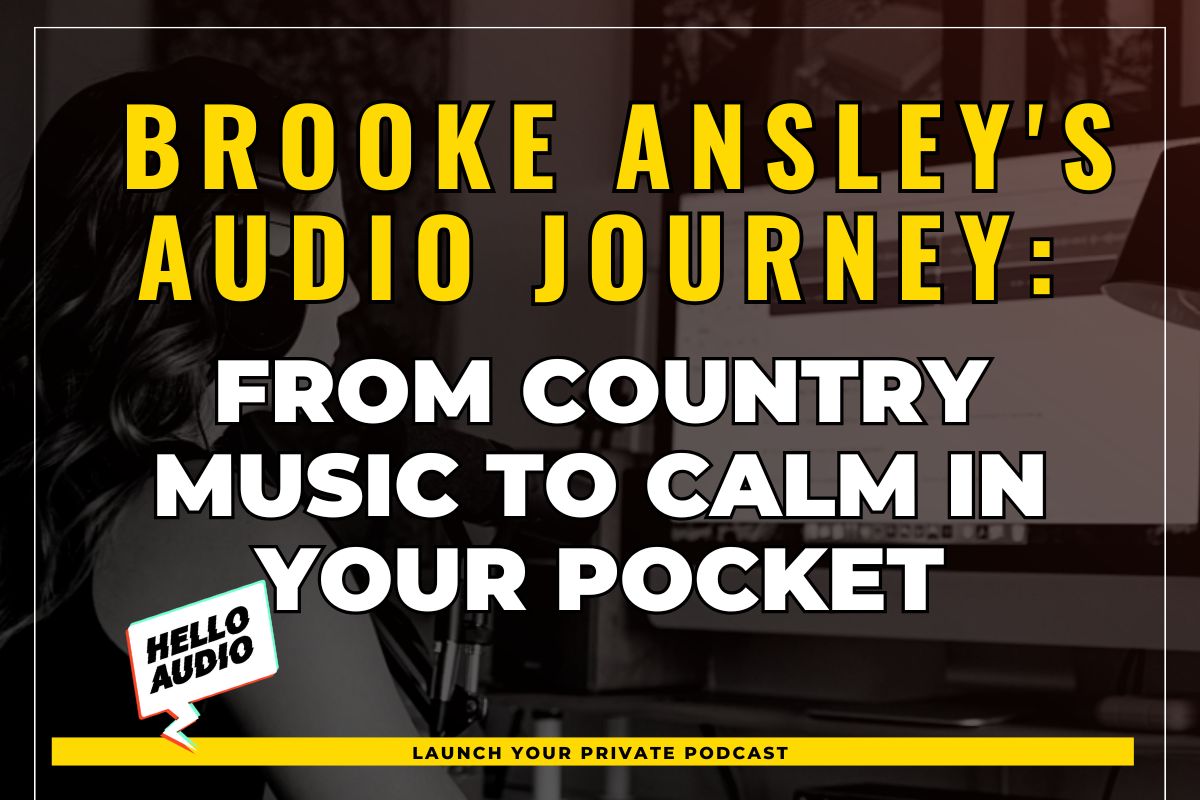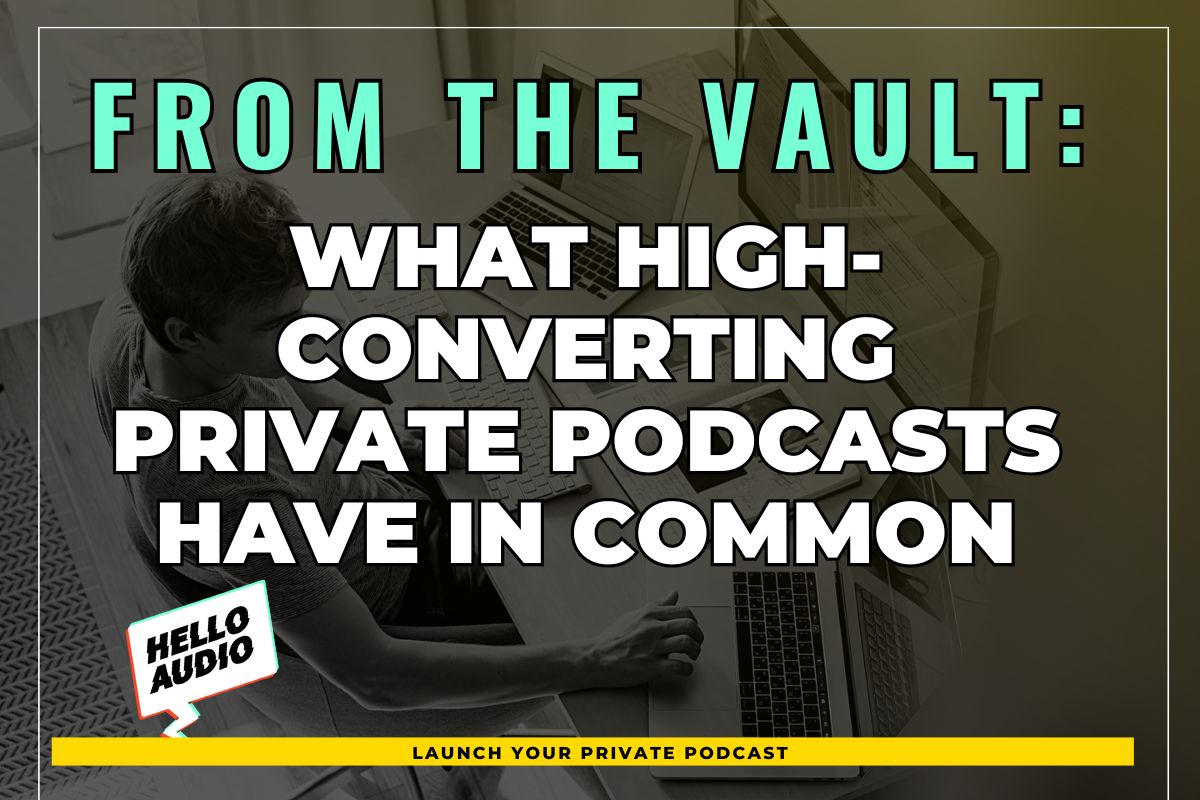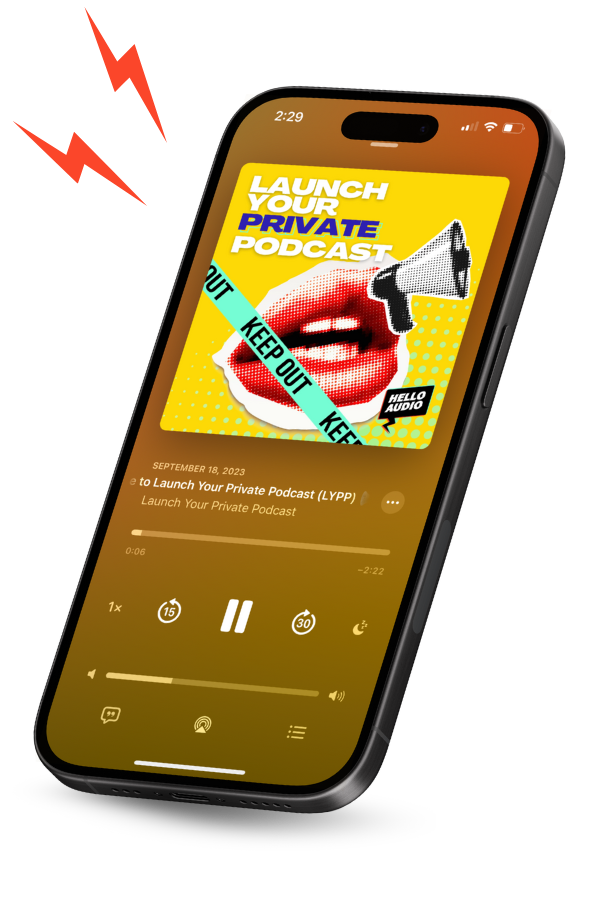The Substack wave has spread across the creator industry. Independent voices now have an exclusive avenue for publishing and even earning.
But is Substack the only publishing platform to reign undefeated in this industry?
The answer is a clear no. Beyond Substack is a wide range of highly customizable options that help creators reach more people, try different content formats, and earn more.
In this blog, we have covered twelve Substack alternatives so that you can choose what best suits your vision and needs.

TL;DR – Our 12 Favorite Substack Alternatives
Here are the twelve most recommended Substack alternatives if you’re planning to shift from Substack:
- Hello Audio
- ConvertKit
- Beehiiv
- Medium
- Hubspot
- WordPress
- SendFox
- Ghost
- Mailchimp
- Flodesk
- Gumroad
- Patreon
All the above tools are great options, but if you are eager to create audio-first content that people can consume on the go, your best bet is Hello Audio. It is a private podcast creation platform that transforms your media content into engaging private podcasts at the click of a button. Sign up for a free trial with us to test it out for your business.
Now, let’s dive into the world of Substack and understand what the platform is and what it does.
What is Substack?
Substack is an internet platform created exclusively for creators to publish and monetize their work via email newsletters and, more recently, podcasts.
Since its 2017 launch, this popular platform has provided content creators like you with various tools to manage their subscriber base and create and publish content. With Substack, creators can make money through sponsored content, paid posts, and subscriptions.
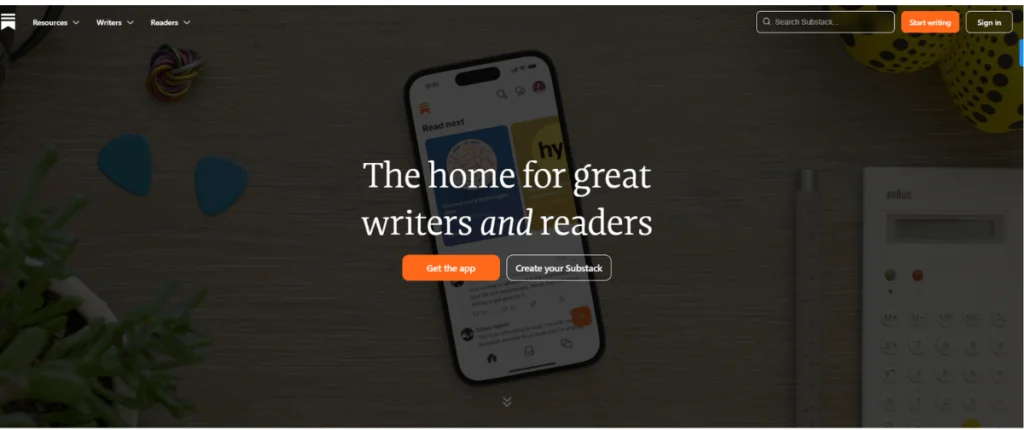
How Does Substack Work? What is Substack Used For?
Substack empowers you with its comprehensive set of tools integrated directly into the platform.
- It makes it easier for creators to build online communities by simplifying everything.
- From creating and publishing newsletters with their user-friendly interface to managing membership tiers and tracking audience engagement through analytics, it helps with everything.
- Creators also use Substack’s secure payment processing for subscriptions, guaranteeing they receive their earnings directly and effortlessly.
Speaking of what it’s used for — Substack is evolving and is no longer limited to being a newsletter publishing platform. To provide content creators with a one-stop shop, they have consciously increased the scope of their features and offers.
Here’s what Substack is used for:
- Website Hosting: Using Substack, creators can now create customized publication websites on their platform.
- Discussion Threads: Substack has a comment thread within newsletters. This helps creators foster a sense of belonging and spark interesting discussions.
- Podcasting: Considering how well audio content performs in today’s age, Substack recently added podcasting features.

Why People Dislike Substack
In April 2023, Substack was under fire for cloning a segment-leading networking app with its latest built-in feature, Notes. With this feature, users can share posts, leave comments, or interact—in general—in a timeline-ish feed like Twitter. In retaliation, Twitter allegedly suppressed all Substack founders/writers’ accounts and marked their domain unsafe.
But is this only why people aren’t big fans of Substack? Apparently, the list of reasons behind Substack’s negative publicity is long, including these reasons:
Limited Monetization Options
On Substack, creators’ earning potential is limited. Sites like Patreon provide numerous industry-standard features, including merchandise integration, pay-per-view material, and even bonus content for higher tiers. Due to Substack’s monetization bottleneck, their platform pales in comparison.
Content Moderation Controversies
Substack struggles to balance preserving free expression and preventing the spread of harmful/offensive content. This makes some users feel unsafe or unwelcome, while others believe their voices are being suppressed.
In November 2023, users reported that many antisemitic blogs were up and running for monetization on their platform. Amid this content and community moderation controversy, hundreds of writers issued open letters, and many left the platform permanently.
Basic Features, Limited Potential
Here’s the thing: Substack is user-friendly for basic publishing. However, it lacks advanced tools and customization features compared to other platforms. Those who often require more integrated tools, customized design elements, or in-depth audience data should look for other alternatives.

What to Look for in a Substack Alternative
Selecting a Substack alternative depends on the features you need as a creator.
Here are some essential features of a newsletter platform that you can prioritize as per your needs:
Ease of Use
A crucial aspect you should consider when selecting an alternative to Substack is the User Interface.
Look for services with an intuitive design that’s easy to understand so you can start (or continue) producing content quickly.
Better Revenue Structure
Currently, you get a 10% cut on the income you make on Substack. This means the more you grow, the more you’ll pay. You can instead look for a platform that charges a flat fee without any commissions on your earnings.
For instance, Hello Audio only charges a subscription fee depending on the features you need. As a result, you’ll get to enjoy 100% of your profits.
All-in-One Feature
When choosing a platform, go for one that bundles everything you need under one roof.
An ideal Substack alternative combines email marketing, analytics, and audience engagement in one place, saving you the hassle of switching apps.
Multiple Income Sources
Diverse content creation solutions are crucial for you to grow financially. As a creator, you must prioritize services that offer multiple ways to generate income.
At Hello Audio, our creators get access to various income streams, including sponsorships, donations, and ads.

Easy Migration
The best Substack alternative should allow a smooth transition for you and your audience.
You must be able to import your email list, posts, newsletter, and podcasts to ensure your returning subscribers can access your past feeds.
Tools to Grow Your Audience
Prioritize services that offer built-in growth features to help you expand your reach.
Look for perks like referral programs, analytics, and integration capabilities to create engaging content for increasing your subscribers.
Relevant Templates
Relevant templates that align with your content type can streamline your creation process.
Consider services that offer templates to make your creation process easier and maintain a consistent brand image.
Customization
Custom themes help you add a touch of your unique style and personality to your work.
Look for services that offer multiple customization options so you can tweak your content as you like.
Reliable Customer Care
A dedicated customer support team can make all the difference.
Look for a platform with quick, responsive customer care in case you need help or have inquiries.

Top 12 Substack Alternatives
Here are twelve top-rated apps like Substack you can use if you have diverse content creation and growth needs:
1. Hello Audio

Hello Audio is an industry-leading option for creators looking to maximize audience engagement with audio-first content. It converts existing media content, such as audio and video, into high-quality private podcasts. In a busy schedule, during a workout, or a commute, your audience can now consume your message on the go.
Creating a podcast on Hello Audio is super easy, as is distributing your content across major platforms like Apple Music, Spotify, etc.
You can:
- Add dynamic intros & outros for personalization.
- Explore analytics to understand who’s engaging for how long.
- Invite specific audiences to listen to your podcasts based on their listening behavior.
Book an instant demo, and let us show you how Hello Audio can help you achieve your marketing goals!
2. Substack vs. Convertkit
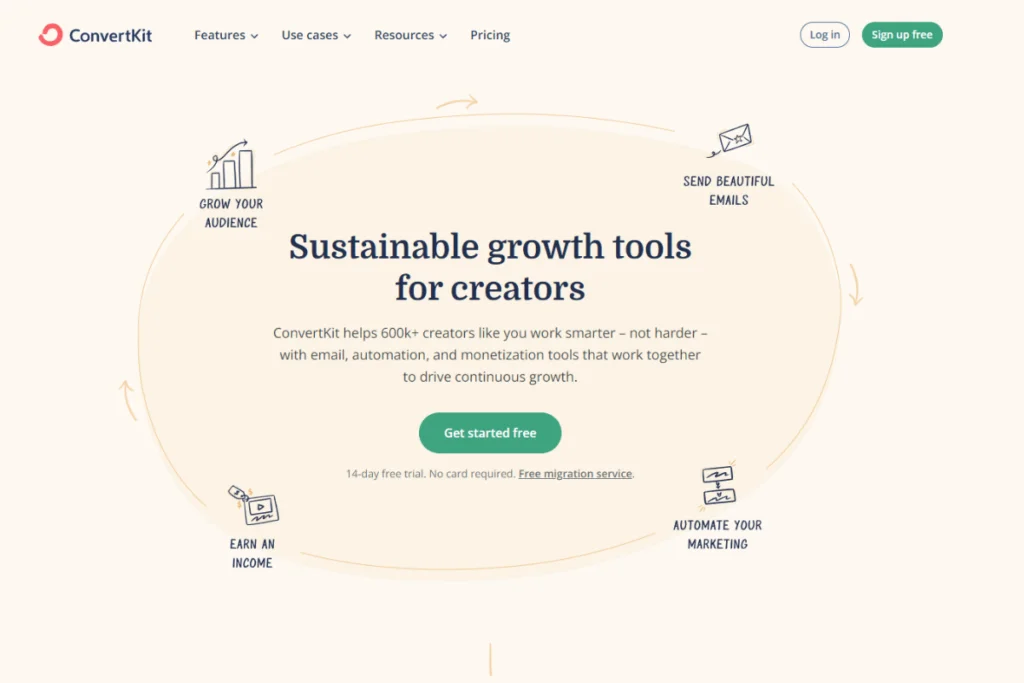
Substack and ConvertKit both come in handy for creators to build their audiences and earn money.
- Substack is great for essential email/newsletters but lacks community features and monetization flexibility. In contrast, ConvertKit supports more content types and integrates with multiple email automation and monetization tools.
- Substack’s simplicity mainly appeals to creators focused on essential newsletters and subscriptions. ConvertKit’s broader features might better fit those with diverse content and active community-building goals.
3. Beehiiv vs. Substack
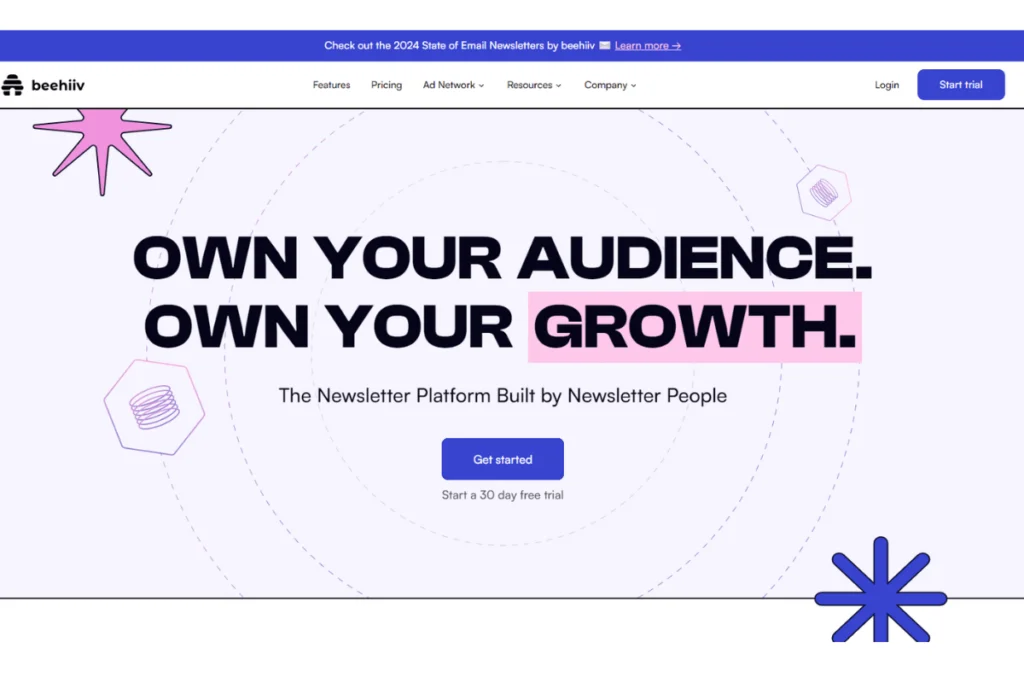
Although they both serve creators creating paid newsletters, Substack and Beehiiv have some important differences.
- Substack is suitable for beginners, mostly writers trying to build a subscriber base. Beehiiv offers more features like landing pages, advertisements, and community tools. However, the learning curve is comparably higher.
- Substack charges 10% of each payment if you plan on launching paid subscriptions. Beehiiv gives creators 100% of the revenue they’ve earned through subscriptions. Instead, they charge a fixed platform fee of $43/month.
- Beehiiv promotes community building through events and debates, but Substack does not.
4. Substack vs. Medium
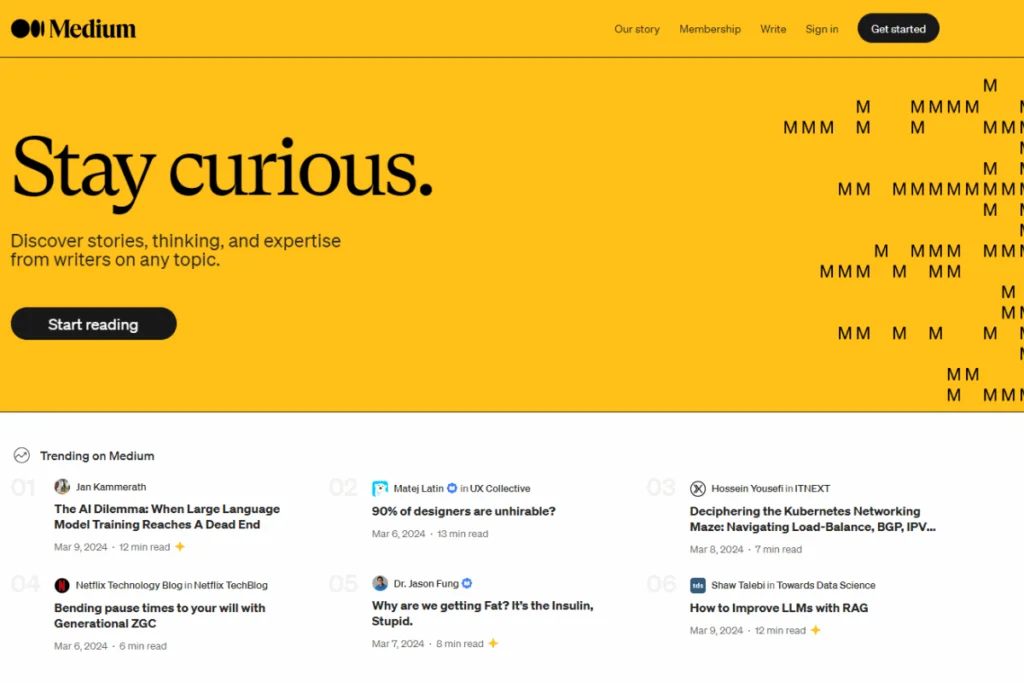
Medium is an open platform with multiple content forms.
Substack lacks in terms of creator discoverability and different content formats. Medium, on the other hand, has a broader audience, visibility, and diversified content. However, it trades control over audience and branding, and its algorithm limits revenue.
If you want control, direct audience connection, and paid memberships, go with Substack. If you want more reach, numerous formats, and revenue sharing, go with Medium.
5. HubSpot vs. Substack
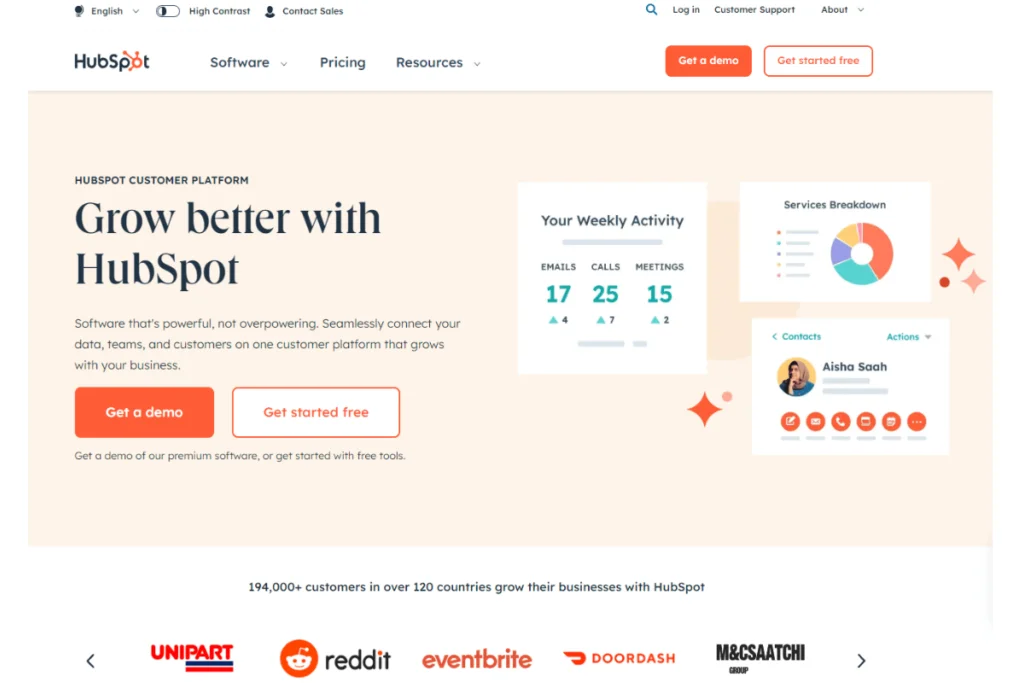
While Substack and HubSpot both offer content production services, their target demographics vary.
Substack’s user-friendly UI, built-in email marketing, and strong community focus make it worthwhile for freelancers. However, it does not have advanced customization or marketing automation tools.
On the other hand, HubSpot is a business-focused marketing platform that includes integrated sales and service tools, extensive analytics, and scalability. However, it has a steeper learning curve and may cost more.
6. Substack vs. WordPress
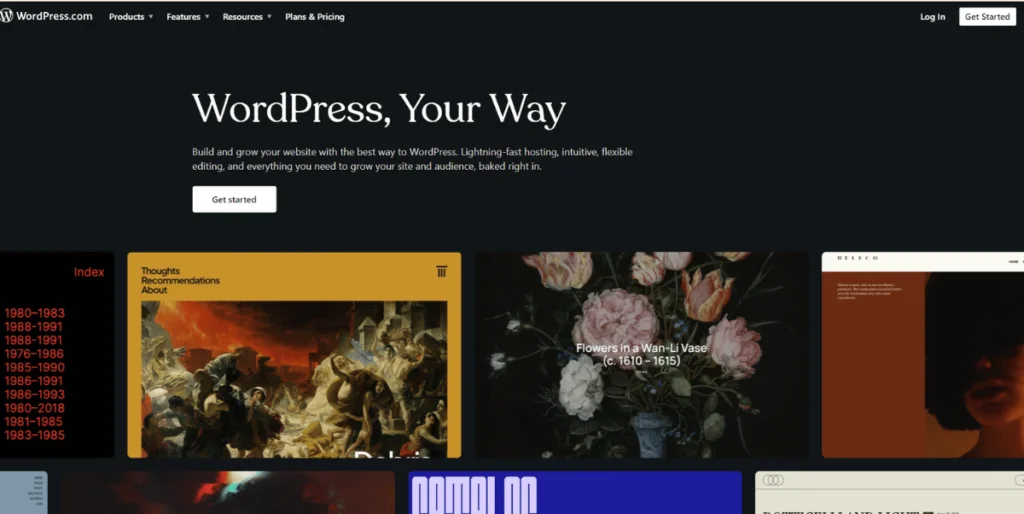
Substack’s limited design, community, and scalability features hinder growth. WordPress CMS provides incredible versatility and customization and supports different content types, community building, and revenue tactics.
With WordPress, you can manage text, photos, videos, and audio content in numerous ways. With total control over revenue, the platform also provides a range of monetization options, including e-commerce, advertising, and subscriptions. However, it takes additional setup work and technical understanding.
7. SendFox vs. Substack
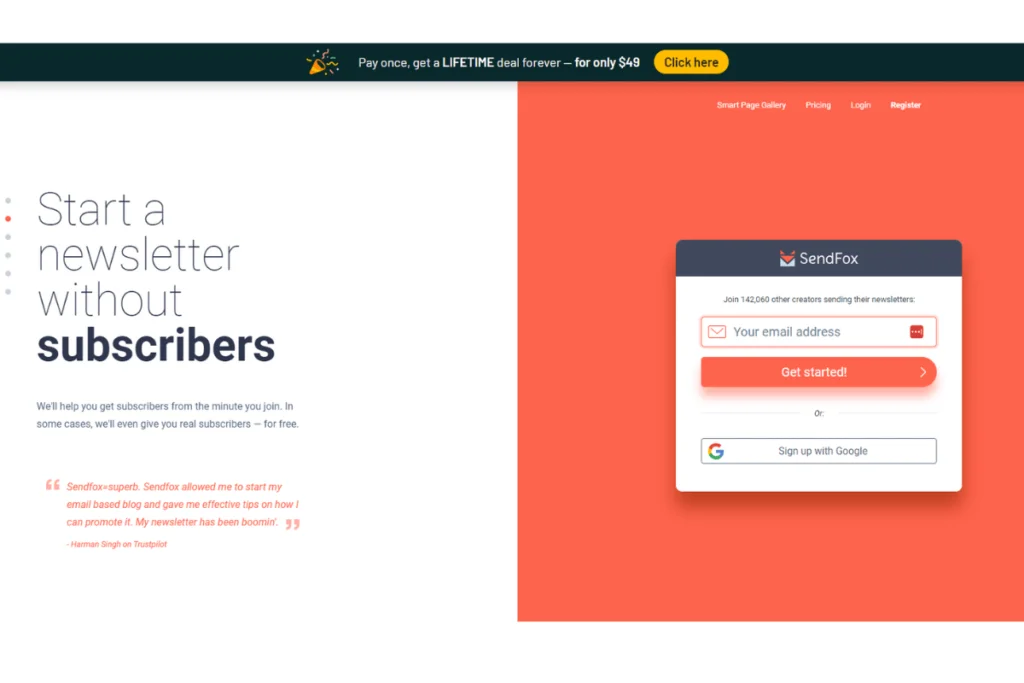
Unlike Substack, SendFox offers more content formats, including landing pages and basic websites. It also offers various monetization alternatives, such as items and events, but it takes more technical expertise to use effectively.
SendFox provides personalized support and additional features like automation and integrations, while Substack has a bigger community and basic support.
8. Ghost vs. Substack
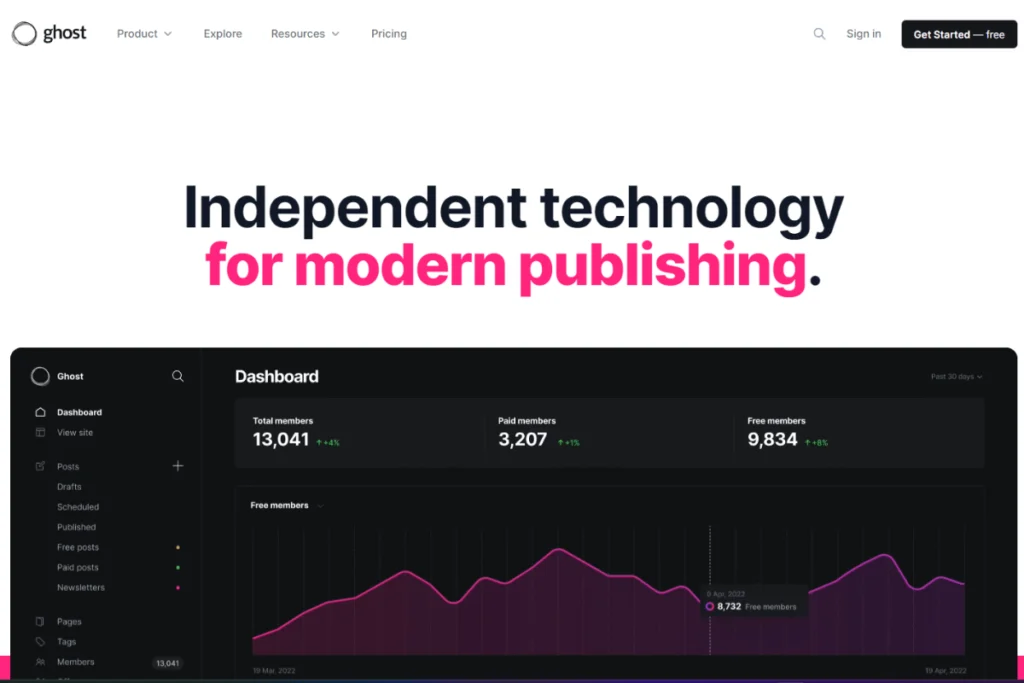
Ghost, another site like Substack, provides full ownership over branding and creator account data. Users also get multiple revenue streams (other than subscription fees) and a sizable plugin ecosystem for additional features.
Because it’s open-source, code customization and seamless integration become effortless. Its scalable architecture also supports growth over time and beyond Substack’s constraints. In brief, Ghost gives creators flexibility and control, allowing them to construct a truly unique and long-lasting online presence.
9. Substack vs. Mailchimp

Here’s the thing: Substack provides a basic platform with restricted functionality and a cost % per subscriber.
Mailchimp is more comprehensive, catering to various marketing requirements through a greater feature set, extensive analytics, and tiered price plans. Substack has a larger creator community, whereas Mailchimp’s is more diverse.
With its advanced features, Mailchimp is a better option for broader marketing and communication purposes.
10. Flodesk vs. Substack

Flodesk stands out with its premium drag-and-drop editor and extra features like landing pages and automation. Creators pay a flat monthly charge, even when their subscriber count increases.
However, it is a premium subscription service with a smaller community. Though it lacks advanced design options and community-building features, Substack impresses with its free plan and writing-focused approach.
11. Gumroad vs. Substack
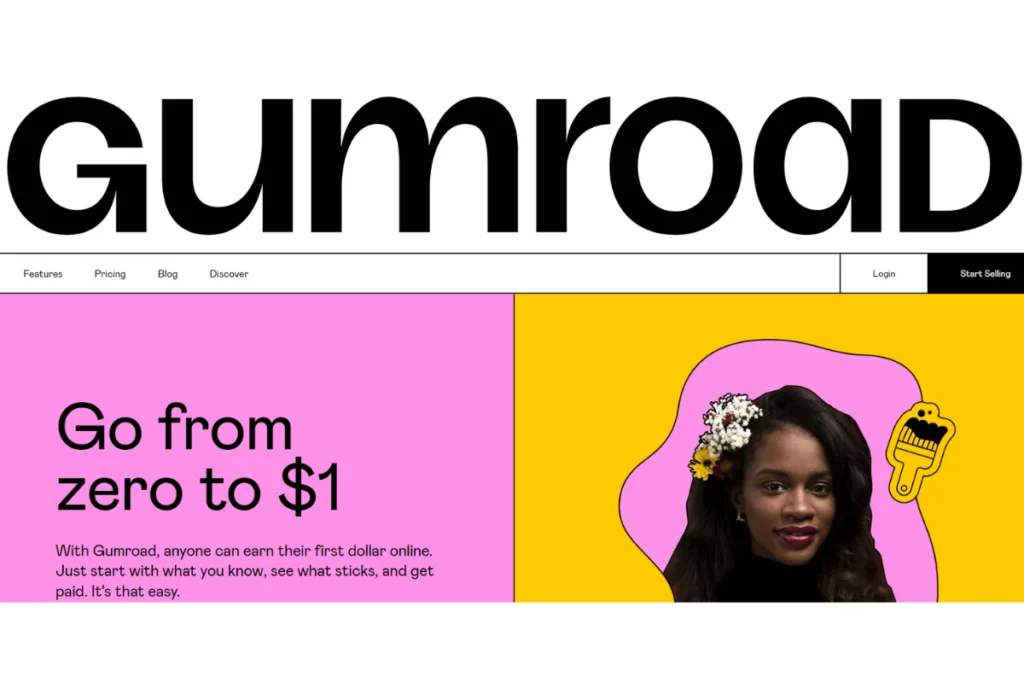
Gumroad‘s greater range of features would appeal to producers looking for multiple formats, one-time purchases, or more flexible monetization approaches.
While Substack provides basic community features, Gumroad interfaces with third-party sites for greater engagement. Lastly, early-stage creators would benefit from Substack’s free plan and commission-based payment system.
However, Gumroad’s transaction and monthly plans are designed for users with varying requirements and pre-existing audiences.
12. Substack vs. Patreon
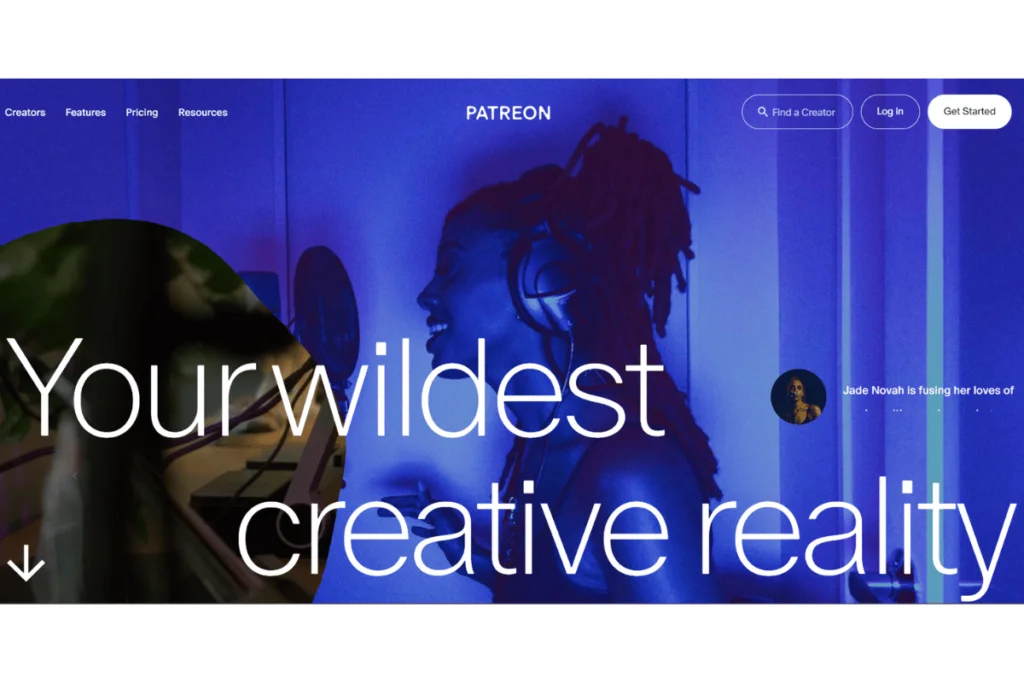
Patreon is better for creators from other fields, such as podcast hosts, musicians, and artists.
It runs on a reward-based subscription model, providing exclusive content, early access, and merch to reward continuous support. Being a dynamic Substack alternative, it welcomes various content formats like text, music, video, and photos. Creators can further use community tools like forums, direct messaging, and live streaming.
Substack vs. Squarespace
Substack and Squarespace are content distribution platforms that have carved out their niches in the digital landscape. Nevertheless, the choice between the two largely depends on your needs as a creator.
- Substack is an excellent option if you want to develop a subscription-based audience, while Squarespace is the ideal platform to create a website with ecommerce capabilities.
- You can boost your website’s visibility using the built-in SEO tools on Squarespace. However, to improve your search visibility on Substack, you need to optimize your content with relevant keywords.
Buttondown vs. Substack
While both Buttondown and Substack allow you to send newsletters, they differ when it comes to their features and degree of customization.
- Substack offers limited design options and only basic formatting, making it hard to stand out. Buttondown, on the other hand, gives you complete design control through a custom domain, allowing you to maintain a professional look and constant branding.
- Buttondown doesn’t have audience discovery tools; hence, you have to rely on external marketing to grow your audience. Substack allows you to build your audience within the platform through community engagement features and recommendations, where other writers promote your content.
How to Choose The Best Option
Are you ready to choose a platform that best fits your content creation requirements?
Here are a few points to remember while making the selection:
Know Your Content, Know Your Audience
Ask yourself: are you an author who writes long articles? Or does your content include a multimedia experience like imagery, films, and podcasts?
Find out what your audience prefers.
- Do they like In-depth analysis or bite-sized audio clips?
- Public communities or exclusive communities like private podcasts?
It is critical to align your platform with your content style and target audience.
Choose Versatility for Long-term Growth
While Substack thrives at text-based content, other platforms have a larger scope. You can combine text, audio, and video to create an engaging experience by using platforms that support different formats.
Think about whether such versatility fits your vision and appeals to your target audience. Additionally, you can also repurpose your content into multiple formats to get the most out of one asset.
Following a Community-first Approach
Building a strong community is key to growth for someone pursuing creative work. Platforms like Hello Audio help build communities around your work and exclusive interactions with your audience. Podcast coach Angie Jordan sold out her launch in just 36 hours after switching from webinars to private podcasts with Hello Audio.
Identifying Your Source of Revenue
Different platforms have different monetization models. For example:
- Some apps offer tier-based subscriptions
- While others offer more diverse revenue-earning opportunities
To select the appropriate platform, narrow down your financial goals and the most suitable income/revenue model. Once you’ve narrowed that down, see which platforms suit your needs and sign up for a trial to test it out.

How to Cancel Your Substack Subscription
Canceling your Substack subscriptions is easy, and you can do it with just a few clicks.
Here’s what you need to do:
- Log in to your Substack account.
- Head to your account settings by selecting the ‘Settings’ option from the drop-down menu that appears when you click your profile icon.
- In your account settings, click the ‘Manage Subscriptions’ option to view your subscribed publications.
- Click on the publication for which you want to cancel the subscription.
- Once the publication opens, scroll down to the ‘Account Actions’ section, where you need to click the link next to ‘To cancel your paid subscription, click here.’
- Confirm by selecting ‘Cancel Subscription’ on the next page to cancel your Substack subscription.
Enjoying this blog? Check out other alternative guides below:

Creative Ways to Engage With Your Audience
To be a successful content creator, you must first build a devoted and active following.
While posting constantly and creating relevant content is necessary, truly successful creators go above and beyond. Here are five ways you can use to maximize audience engagement while posting:
Know Your Audience Inside and Out
Understanding is the foundation for engagement. Research and analyze your target audience’s demographics, interests, and preferences.
- What questions are they asking?
- What challenges do they face?
- What content do they resonate with the most?
You can conduct surveys, polls, or interviews to acquire information about their preferences and personalize your approach.
Aim for Two-Way Conversation
Dialogue is a two-way street. Actively listen to your audience instead of just blindly publishing content. Respond to comments and questions, debate, and hold live Q&A sessions.
Encourage open dialogue and feedback, making your audience feel heard and valued.
Go Beyond the Obvious
We’ve got four words for you: think outside the box!
Pique their interest and promote involvement. Here’s how:
- Try experimenting with more interactive content formats to see what works best with your target audience.
- Add a personal touch and boost audience engagement with private podcasts, interviews, or AMA sessions.
Collaborate and Connect
Partnerships can be effective, especially for content creators. Collaborate with others in your field, attend industry events, and host guest interviews.
By doing this, you can attract new audiences and build strong networks with industry professionals.
Build Community Spirit
An active and exclusive community promotes loyalty and a sense of belonging.
Build private spaces for dialogue, promote member introductions, and recognize every member’s contribution.
Encourage audience members to collaborate and provide avenues for networking. This way, creators can build a loyal following that engages and supports their content.

Frequently Asked Questions (FAQs)
Got more queries? Head to our FAQ section below:
How Much Does Substack Cost?
Substack takes 10% from every transaction, while Stripe (payment processor) takes 2.9% + $0.30 per payment, plus an extra 0.7% for subscriptions only. Creators end up retaining approximately 85% of the revenue per subscriber.
As a better alternative, Hello Audio is more reasonably priced at $14 per month for the Starter pack. The Starter pack has no limit to the number of subscribers you have, meaning you can keep 100% of the profit you make on our platform.
Which Substack Alternative Has the Best Mobile Experience?
Hello Audio offers the ultimate mobile experience.
Our platform has a sleek, user-friendly interface optimized for mobile use, making it easy for your listeners to consume your content anywhere and at any time.
The seamless mobile experience also empowers you as the creator to engage with your audience and post content on the go.
What is the Learning Curve for New Users on These Platforms?
While Substack is a free and powerful tool, you don’t get subscribers instantly after joining.
You need to learn how to market yourself, build an audience, and consistently produce valuable content.
In short, the learning curve involves transitioning from writing content to managing your audience and growing your subscriber list.
Hello Audio’s learning curve is gentle because it offers a beginner-friendly interface. This helps you focus more on content creation rather than learning how to use the platform.
Do Any Platforms Offer White-Label Solutions?
Yes, Hello Audio offers white-label solutions.
This allows you to deliver private podcast content under your brand, with custom cover art and titles and no Hello Audio branding.
You can customize all your visuals and naming elements to include your brand’s details, reinforcing a professional image among your audience.
Is Substack Worth It?
Not sure which Substack alternative is ideal for you? The only way to find out is by experimenting. Sign up for a trial, test out the features, and see what works best for you. Use this blog as a reference to shortlist the platforms you want to test.
Amongst all the alternatives discussed today, Hello Audio helps you form stronger connections with your audience with exclusive audio content. Convert your media content into high-quality podcasts today with Hello Audio’s 7-day trial (no credit cards required).

